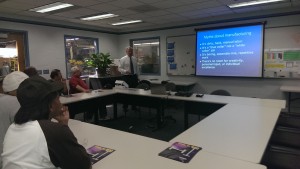Equipment Manufacturers (OEMs) and structural steel fabricators subcontract work to companies that specialize in bending and curving steel. Roller/Benders have the equipment, the methods and the machine operators that can produce high quality curved metal parts on time with competitive pricing.
Where do Bender/Rollers find the machine operators to run the section benders, plate rolls and other equipment to bend metal? For the most part, entry-level employees are brought into the rolling company and trained there. It is seldom the case that a full-fledged machine operator applies for an advertised position. Of course an operator may choose to move from one rolling house to another, but this too seems rare.
There are very few training courses in rolling metal. The companies that manufacture section benders and plate rolls sometimes hold workshops, but these programs are rudimentary. Bender/Rollers, due to the varying nature of their work, need operators who can set up their machines to roll a wide variety of sections – angles, bars, beams, channels, tees, pipe, and tube. And in a wide variety of orientations, e.g. leg-out angle rings, hard-way beams, stem-up tees. And an operator should know how to handle the most extreme bending requirements like tight radii, helical bending of heavy tube, and compound bends.

So, given that the most likely source of machine operators will be entry-level employees, where should Bender/Rollers go to find individuals who would thrive in the environment of these shops? One answer is community based organizations (CBOs) that provide training for adults who wish to transition into manufacturing. Some offer a 16-week program which includes introductory computer training, applied mathematics, and other courses to help the students become “work ready.” Employers should consider this pool of talent because these students have shown an interest in continuing education, have proven they are reliable because of their attendance record, and have chosen to work in manufacturing.
It is also helpful for employers to use every opportunity to dispel the myths of manufacturing: that it’s always dirty, hard, manual labor; that it’s a “blue collar” not a “white collar” job; that it’s boring, assembly-line, repetitive work; and that there’s no room for creativity, personal input, or individual excellence.
The reality is that manufacturing today is high-tech, even in low-tech industries; that associates are trained in “lean manufacturing;” that associates use computers daily; that associates create new solutions to problems in a team environment; that “blue collar” and “white collar” divisions are blurred; and that it’s interesting, fast-paced, and ever-changing.







